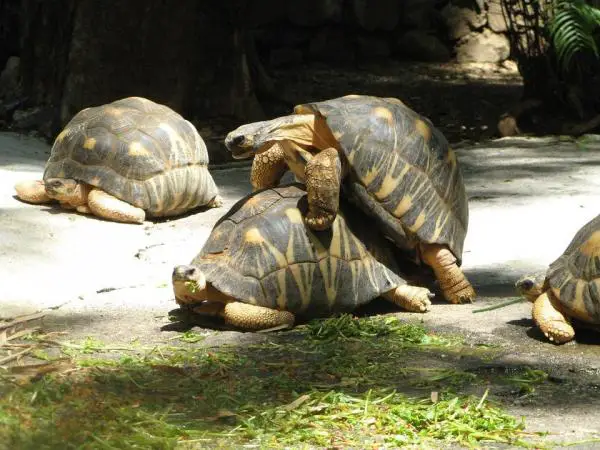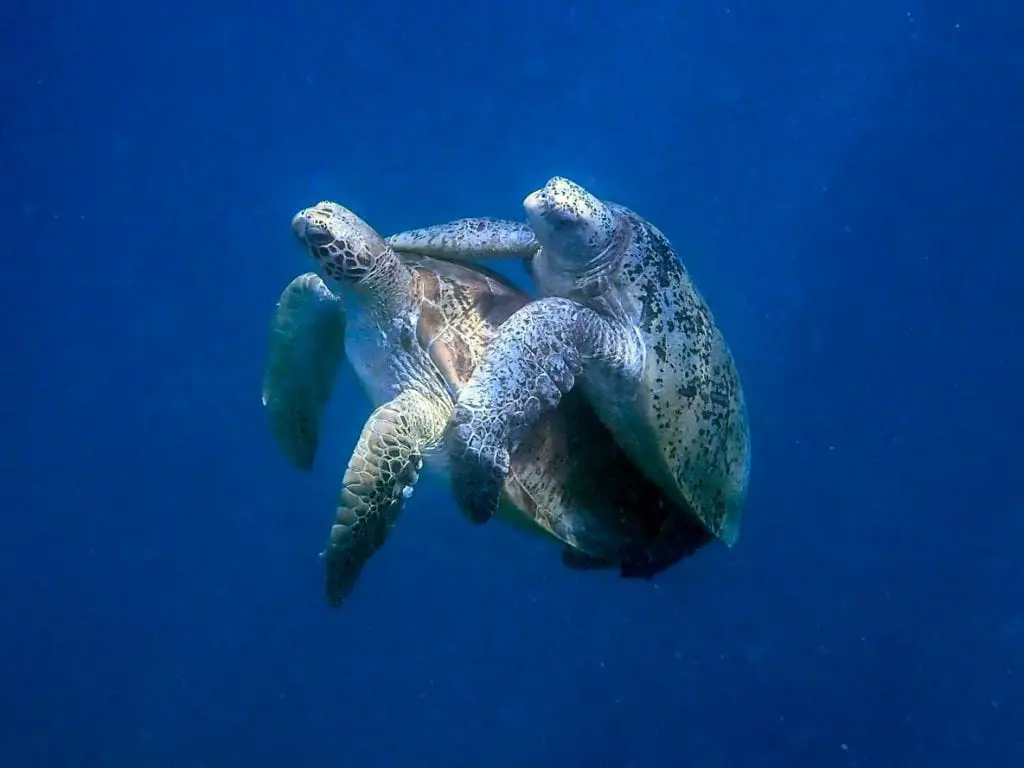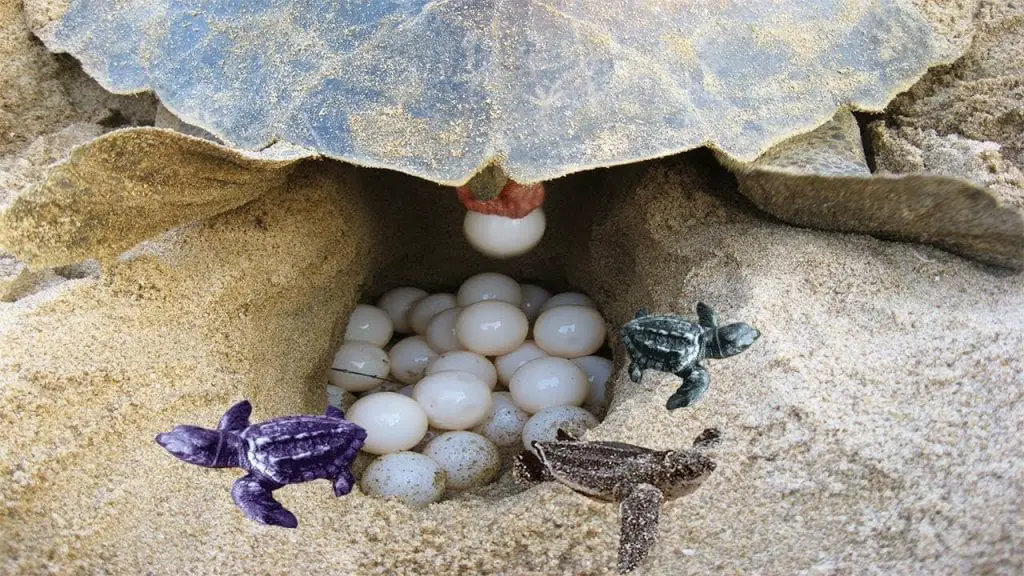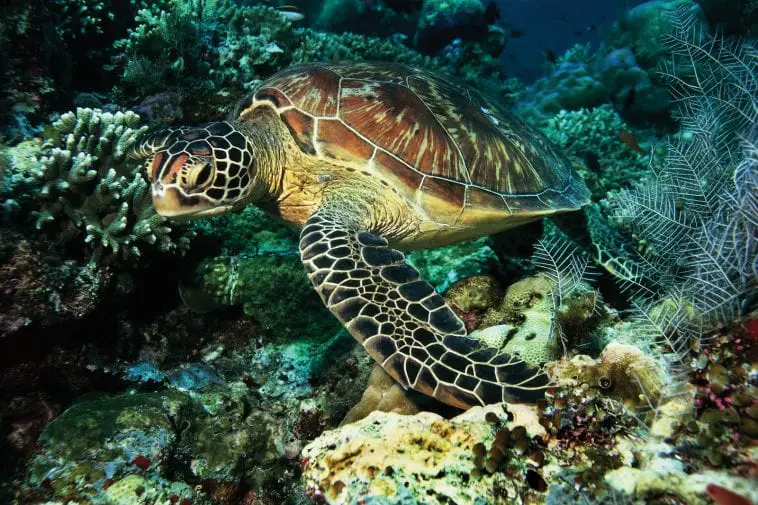If you want to know about how turtles reproduce, you’re in for a very broad subject. This is because there are various ways and processes involve in turtle breeding, and it can vary depending on the specific species of turtles. Of course, the main groups of turtles are freshwater turtles, land turtles, and sea turtles. But, under those categories, there are numerous species and subspecies of turtles that have their own ways to mate and breed their young.
Here is a general overview of the reproduction of turtles and tortoises, including some general examples that you can take note of so that you can enjoy some extra pieces of knowledge or additional caring tips as a turtle care enthusiast.
The Basics of Turtle Reproduction
All types of turtles lay their eggs on land. None of the existing turtle species feel a sort of bond or attachment to their eggs, therefore, not showing any form of parental care. However, these are the only similarities, as there are distinct differences depending on their physiologies, ecologies, and individual behaviors.
The turtles usually have a seasonal reproductive activity. For most species, the breeding period occurs in close conjunction with annual weather changes. The most common trend for turtles is in springtime, as this is when the length of the days starts increasing and in regions where it is temperate and hotter. On the other hand, for turtles in tropical locations, breeding can occur late in the dry season or the start of the rainy season.
Turtles lay their eggs coinciding with the periods which are favorable for the development and the emergence of hatchlings. Basically, this is influenced by optimal weather conditions and abundant food.
Turtle Reproduction: Age and Sexual Maturity

The age at which turtles first reproduce can start at a few years of age to wait until they are 50 years old. Smaller turtle species are known to reach their sexual maturity a lot sooner compared to bigger species.
For instance, female False Map Turtles that are found in the United States grow only up to 3.2 inches or 8 cm long. These tiny turtles get sexually mature once they reach two to three years old. On the other hand, the Eastern American Mud Turtle is a little larger and has to wait until they are 3 to 4 years old before they can procreate. The common Snapping Turtle, which is about 1 foot or 30 cm long, only become sexually mature once they are 10 to 12 years old. Though it is a little similar in size, the Mexican Tortoise matures when they reach 14 to 15 years of age.
Reaching their sexual maturity also depends on how quick the growth of the turtle is, which is also directly influenced by the quality and the quantity of the food the turtle’s intake. For example, the Green Sea Turtle has a different maturity age depending on where it was raised. When in the Atlantic Coast, it ranges from 24 to 28 years of age. In Hawaii, it takes about 30 to 34 years, while in Australia and the Great Barrier Reef, it can take up to 40 years or much longer.
Turtle Reproduction: Courting and Copulation

In animals, courtship is the behavior that will result in mating, and eventually, reproduction. It is triggered by numerous auditory, chemical, and visual stimuli. It can be a highly complex series of acts by two or more individuals through the use of several modes of communication.
For turtles, courting and copulation requires the work and cooperation of both genders because of the shells of the turtles. Mating can only commence for them through their entwined tails, which means placing the vents of the turtles together so that the penis of the male can be inserted to the female.
The patterns of courtship for these turtles can range from a terrifying interaction that involves something that seems hurtful, but it can also look like a titillation routine that moves the female turtle to cooperate. Courtship can also involve more than one male. In this way, these turtles compete and rival each other for the attention of the female. The male’s ram, charge, and bob their heads with each other aggressively. Once the strongest male wins, he uses the same aggressive tactic to bite the female and force her to submission and immobility.
However, if you look at the smaller sliders and scooters, their courtship rituals are much more subtle. For these freshwater turtles, the courtship starts when the males swim above or behind their desired female. Then, he extends his forelimbs and his claws until he brushes the sides of his partner’s head. His forefeet produce vibrations, and the rapid, light touches of his claws titillate the female.
In some species of turtles, including Batagur, Argentine Side-Necked Turtle, and Asian River Turtle, the male of the species develop a bright head and bright trunk to serve as the signal that they are now ready for sexual reproduction and eliciting the cooperation of the female.
Another surprising fact is how domestic turtles have evolved. Nature has finally caught up to protect the female turtles and minimize the possible pains and problems of mating with aggressive males. Female tortoises can now store and retain male turtle sperm while keeping everything active for three years. During that time, the female can avoid mating as she has an abundance of usable turtle sperm.
Egg Laying and Nesting

Some turtles, like sea turtles and leatherback turtles, are migratory, and they traverse hundreds of kilometers from their main feeding areas to start their nesting on beaches where the eggs will hatch. The annual migration of turtles also occurs in some river-dwelling turtles, which includes the species of Asian River Turtle and South American Arrau.
These turtles spend time crawling through rivers so that they can find some sandbars where they can rest in. On the other hand, female turtles that are aquatic also leave the water temporarily in order to find other nesting sites. Some turtles that reside in streams just transfer to the banks, but some to travel longer, hundreds of meters even, just so they can find a perfect nesting spot.
Depending on the species, there will be a different number per clutch of eggs. The number of eggs per specific clutch is dependent on the species. For small species, they usually typically lay a few eggs, some even just lay just one or two. For the largest turtle species, the numbers definitely increase.
Here are some examples of clutch sizes per species:
- Leatherback Sea Turtles – 50 to 90 eggs per clutch
- Hawksbill Turtles – 140 to 160 eggs per clutch
- Olive Ridley Turtles – 105 to 110 eggs per clutch
- Aldabran Tortoise – 12 to 14 eggs per clutch.
- Common Snapping Turtle – 20 to 30 eggs per clutch
- Suwanee Cooter Turtle – 15 to 20 eggs
In most turtle species, eggs are only laid once in a year. Some turtle species lay eggs once every two years, while others lay twice within one nesting period. For sea turtles, they nest every three to four cycles. The females of the species lay multiple clutches of eggs during every nesting season. Within the breeding season, the egg-laying cycles can occur two weeks apart, which allows the female of the species some time to rest from the demands of the demanding and draining excursion that also involves shelling and ovulation of eggs.
Some turtle eggshells can feel like leather for sea turtles and can feel very brittle for tortoises. For all eggshells, a major component is calcium carbonate, but sea turtles have lesser content.
A unique behavioral pattern of these turtles is nest digging. This involves digging chambers in which the eggs will be laid. It occurs once the female turtle has finalized the location that she will use as a nesting site; she starts utilizing her hind limbs to make alternating scooping movements. One hind limb will serve to support the rear half of her body; then, the other one moves inward under the tail. Next, using a twist of her foot in a circular motion, she spades into the soil and make a quick sideward flip, then, dropping the soil to the outside as the hindfoot lock into its supportive position. Then, the opposite foot repeats the pattern in a slow and steady alternation until the nest is fully dug. The digging will stop when the female turtle has reached a depth that will be equivalent to the total length of her outstretched hind limbs. After that, the female will prepare herself using her hind limbs and centering her tail over the hole. Then, she will drop her eggs into the hole she has dug. After all the eggs have been delivered, the female turtle will resume her movement of digging soil, but this time, trying to bring the soil back to cover the hole. She will then leave these eggs alone once the eggs are secure.



